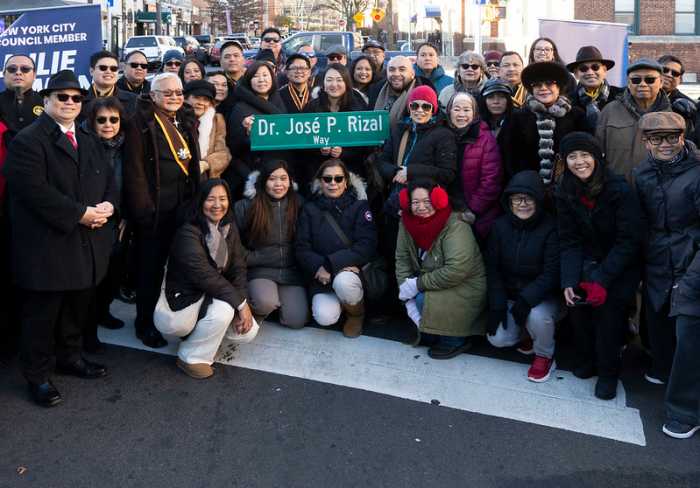By Rebecca Henely
The Queens Plaza millstones seemed to have found a permanent home in the new Dutch Kills Green, but Greater Astoria Historical Society Executive Director Bob Singleton said one of the stones has been damaged and the pair should be in a safer place.
“These are really precious historical artifacts,” Singleton said. “We’d like to have them analyzed. We’d like to have research done on those things.”
The city Parks Department did not respond to a request for comment on Singleton’s campaign.
Singleton originally lobbied for the millstones to be placed in the care of the Greater Astoria Historical Society before the Dutch Kills Green was built, although the then-leaders of the Dutch Kills Civic Association disagreed, saying they did not want them to be in a museum.
One of the millstones had been cracked when it was originally stored at the Queens Plaza construction site, and Singleton said a piece of that millstone has now fallen off.
Dominic Stiller, current president of the civic, did not respond to a request for comment.
As Queens Plaza has radically changed in the last three years, losing its commuter parking lot for a 1.5-acre open space and bike lanes, the Dutch Kills community has been at odds over what to do with two millstones that date back to the 1600s. The millstones were used at a tide mill for flour at Queens Plaza that was opened in the mid-1600s and eventually closed in the 1860s. The Paynter family, which owned most of the land at the time, saved the millstones.
When construction began at Queens Plaza in 2010, the millstones were left at the site as work was going on, which angered several people in the community. The millstones were temporarily moved to the Long Island City Library, but when construction was completed on the open space, which was named Dutch Kills Green, the stones were mounted on pedestals and installed in the new plaza.
Bud Warren, of Maine, is the president of the Tide Mill Institute, a group which focuses on the history and heritage of tide mills. He said the open park is not a good place for the artifacts.
“They’re not really delicate, but they’re really sensitive and it’s not the place to put them,” Warren said.
Singleton said he would prefer the millstones be moved from the Dutch Kills Green and replaced with replicas.
“In my mind that would be the best solution,” Warren said.
Reach reporter Rebecca Henely by e-mail at rhenely@cnglocal.com or by phone at 718-260-4564.





































